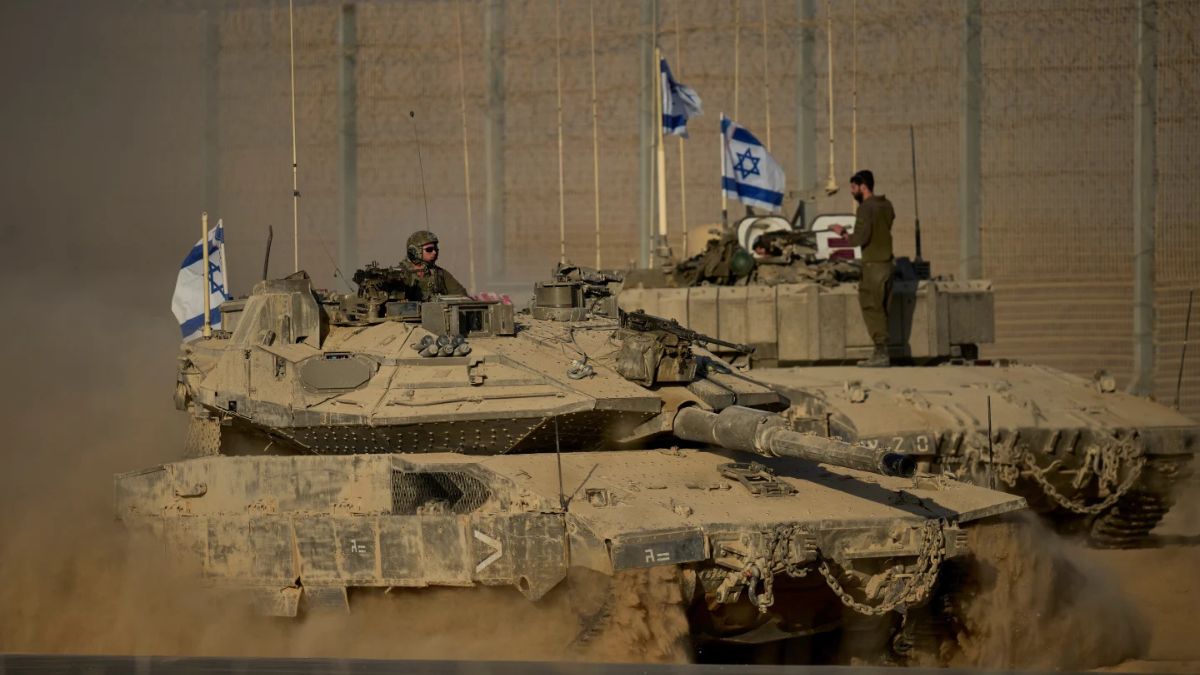Gaza truce under strain: Donald Trump's envoys rush to save peace deal amid renewed tensions

US President Donald Trump has sent two of his envoys to Israel in an effort to reinforce a fragile ceasefire between Israel and Hamas, following a surge in violence that threatened to unravel the agreement.
The visit by special envoy Steve Witkoff and Trump’s son-in-law and senior adviser Jared Kushner comes as both sides accuse each other of ceasefire violations, even as they profess continued commitment to the truce. Vice President J.D. Vance and Second Lady Usha Vance are also expected in Israel today for further high-level talks. Their mission includes ensuring that humanitarian aid reaches civilians, that the bodies of deceased Israeli hostages are recovered, and that the terms of the ceasefire are respected.
The ceasefire, brokered earlier this month by the Trump administration, faced its most serious test on Sunday, when Israeli forces killed dozens of Palestinians in a series of strikes after two Israeli soldiers were reportedly killed in a Hamas-led ambush.
Israel temporarily suspended humanitarian aid deliveries to Gaza, only to resume them the following day as part of efforts to maintain the truce. On the same day, Israel received the remains of another hostage from Gaza. United Nations spokesperson Stephane Dujarric confirmed that aid deliveries had resumed, but did not provide specifics regarding the volume or reach of the shipments.
US on the ceasefire strain
Witkoff and Kushner spoke to Israeli Prime Minister Benjamin Netanyahu about maintaining the ceasefire and plans for long-term stabilisation. However, in a speech to the Knesset yesterday, Netanyahu sounded combative, warning Hamas that truce violations would be met with severe retaliation.
Speaking from the White House, Trump said the United States would give the ceasefire “a little chance” to hold, but reiterated that Hamas must abide by the agreement or face consequences. He claimed the US could urge Israel to resume full military operations in Gaza to “eradicate” Hamas if necessary, but preferred to allow the current deal an opportunity to succeed.
“We made a deal with Hamas. They agreed to behave and be good. If not, we’ll take care of it, and it won’t be pretty,” Trump told reporters.
Vance, speaking before his departure, attempted to downplay Sunday’s violence. He characterised the flare-up as one of the inevitable “hills and valleys” in a complex peace process, and suggested that rogue Hamas factions—rather than its central leadership—were responsible for the ambush.
“Hamas is not a monolith,” he explained. “There are roughly 40 cells operating with varying degrees of coordination. Some will observe the ceasefire; others clearly won’t.”
In a related effort, the United States is partnering with Turkey to deploy a team experienced in body recovery, leveraging Turkish expertise from years of earthquake response.
Witkoff and Kushner are also tackling unresolved elements of the original ceasefire deal, such as the establishment of a regional stabilisation force led by Egypt and the gradual demilitarisation of Hamas. No timeline has yet been set for these measures.
Hamas remains stubborn
Egypt, a key mediator, hosted senior Hamas official Khalil Al Hayya in Cairo on Monday to discuss implementation strategies. However, Hamas and allied factions have expressed strong opposition to elements of the Trump Plan, particularly the proposed foreign administration of Gaza and demands for disarmament.
Hamas insists that any post-conflict governance must be Palestinian-led, and has so far resisted calls to relinquish its weapons.
Under Trump’s 20-point plan, Gaza would be overseen by an international technocratic body composed of global powers, led by Trump and former UK Prime Minister Tony Blair. Hamas is required to disarm, but it continues to reject both provisions.
Trump said he believed Sunday’s attack was not ordered by Hamas’s top leadership, attributing it instead to internal divisions and what he described as “rebellion” within the group. He also referenced internal violence within Hamas—including reported executions of rival clan members—to illustrate the challenges of enforcing the ceasefire.
“This is a violent group,” Trump said. “If they keep acting out, we’ll straighten it out—and quickly.”
While Trump suggested that Washington would take action if necessary, he also stressed that enforcement of the deal now rests with other nations.
Arab governments involved in brokering the agreement are continuing negotiations in Cairo, according to a White House official.
“Right now, it’s in the hands of others. Fifty-nine countries have signed on,” Trump added.
The violence continues
Privately, several Trump administration officials have voiced concern that Netanyahu may abandon the ceasefire. The current strategy, they say, involves using Vance, Witkoff, and Kushner to dissuade the Israeli prime minister from launching a full-scale assault on Gaza.
Despite ongoing efforts to uphold the truce, violence continues in Gaza. Israeli artillery targeted Deir Al Balah on Monday, and two Palestinians were shot dead in Gaza City. Israeli forces maintain control over more than half the territory and have started marking “red zones” that Palestinians are barred from entering. However, the lack of clear boundaries has caused confusion. On Friday, at least 11 Palestinians were killed after crossing a demarcation line in Gaza City.
In his Knesset address, Netanyahu reiterated his government’s commitment to the disarmament of Hamas and the demilitarisation of the Gaza Strip.
He described the current deal as having met its primary objectives: the return of all living Israeli hostages, military control over most of Gaza, and international backing for Hamas’ eventual disarmament.
Middle East